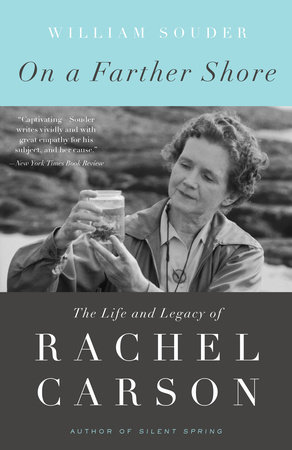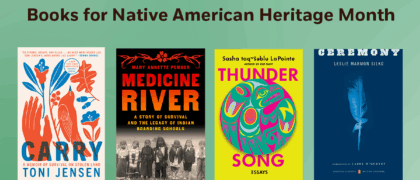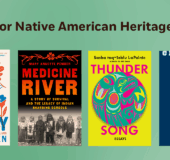One
Miss Carson's Book
Late in the summer of 1962, extreme weather visited both ends of the United States. In the West it was so hot that women wore swimsuits on the streets of San Francisco, and the smog levels in that city were the highest ever recorded. On the East Coast, Hurricane Alma churned northward, interrupting a pleasant spell as it neared the tip of Long Island. On August 28 the edge of the storm ended play at Yankee Stadium one inning after Mickey Mantle blasted what proved to be the game-winning home run to right centerfield through a driving rain. The next morning it was sunny and warm in the nation's capital, where the Washington Post's weather section reported daily radiation levels of just three micromicrocuries per cubic meter of air--unchanged from the day before and not bad given the recent pace of atmospheric nuclear weapons tests by both the United States and the Soviet Union.
That same day, President John F. Kennedy appeared at the State Department at four in the afternoon for the forty-second press conference of his year and a half in office. The president began by announcing Felix Frankfurter's retirement from the U.S. Supreme Court. He then fielded questions about farm policy, tensions in Berlin, and whether he would meet with Nikita Khrushchev during the Soviet premier's upcoming visit to the United Nations. Kennedy also answered several vaguely portentous queries about an apparent increase in Soviet shipping traffic to Cuba. Near the end, Kennedy took an unusual question. "Mr. President, there appears to be a growing concern among scientists as to the possibility of dangerous long-range side effects from the widespread use of DDT and other pesticides. Have you considered asking the Department of Agriculture or the Public Health Service to take a closer look at this?"
If he was surprised, Kennedy did not miss a beat. "Yes," he said quickly, "and I know that they already are. I think, particularly, of course, since Miss Carson's book, but they are examining the issue."
In this brief exchange something new came into the world, for this was a cleaving point--the moment when the gentle, optimistic proposition called "conservation" began its transformation into the bitterly divisive idea that would come to be known as "environmentalism." Kennedy's promise of a government investigation into the contamination of the environment by a widely used and economically important class of products had no precedent. And because the government itself used pesticides extensively, any such inquiry necessarily had to look in the mirror. Compared with the other matters Kennedy had discussed that day--policies that would evolve, situations that would change and fade away--a problem with the health of the environment became by definition a problem with the totality of human existence. At issue was humanity's place in the natural order of a world increasingly subservient to the human species. Who but us could devise so perfect a way to contend with ourselves?
The president's reference to "Miss Carson's book" would now be opaque to the several generations of Americans who have come of age in the intervening years--Rachel Carson is unknown to almost anyone under the age of fifty. But in 1962 no elaboration was needed. Carson was the bestselling author of three books about the oceans and by any measure one of America's most respected and beloved writers. Or so she had been. The new book to which Kennedy referred, Silent Spring, was a bristling polemic about the indiscriminate use of pesticides. It was unlike anything Carson had previously written. Although not yet actually a book--it wouldn't be published for another month--in June three long excerpts from Silent Spring had appeared in consecutive issues of the New Yorker. By the time of Kennedy's press conference, the New Yorker articles had raised public alarm in the United States and abroad and prompted the chemicals industry to launch an angry and concerted effort to discredit Silent Spring and destroy its author.
The woman at the center of this firestorm scarcely seemed capable of becoming such a polarizing figure. Now fifty-five years old, Rachel Carson had spent most of her adult life in the company of her mother--writing, bird-watching, and visiting the seashore. Petite, soft-spoken, and nearly apolitical, she lived quietly in a leafy suburb of Silver Spring, Maryland, with a cat and her orphaned ten-year-old grandnephew, Roger Christie, whom she had adopted. Carson had earned a master's degree in zoology at Johns Hopkins University but had never worked as a scientist. In the gloom of the Great Depression, she instead found a job as an information specialist with the federal government's Bureau of Fisheries, an agency later merged with the Biological Survey to form the U.S. Fish and Wildlife Service.
In 1951 her book The Sea Around Us made Carson's literary reputation--it stood atop the New York Times bestseller list for thirty-nine weeks and won the National Book Award--and she left government service. Every spring Carson and Roger drove north to Southport Island on the Maine coast, where she owned a cottage on a rocky bluff overlooking Sheepscot Bay. Here Carson passed her summers in reflection, gazing at the ebb and flow of the sea, collecting marine specimens in the tidal pools along the shore, and visiting, often deep into the fog-shrouded nights, with her neighbors Dorothy and Stanley Freeman. In the fall, she went home.
Carson's writings about the sea were characterized--solemnly and without fail--as "poetic," a term invoked by reviewers as a way of saying that she wrote with a grace that was unexpected given her subject. The living, evolving nature of the open ocean and the intertidal zones on its threshold were unfamiliar to most readers--as were the lessons in geology and physics and biology that Carson poured into her narratives. Her knack for gentle explanation beguiled critics and readers alike, even those who could have never imagined caring about science or the strange water world that so fascinated Carson.
Critics remarked, time and again, that there was something bracing and surprising in the fact that a woman should have such a profound understanding of the physical environment. They also believed her to be a heroic correspondent regularly at sea on research vessels hurtling through storms, or swimming among the fish teeming on the coral reefs of the tropics--a false impression that she never bothered to correct. A friend who once drew a caricature of Carson's public persona had depicted her as an Amazon towering at the edge of a stormy sea, a harpoon in one hand and a writhing octopus in the other. Carson, who would have been more accurately shown hunched over a microscope or in the library surrounded by piles of books, thought the drawing hilarious.
A slow writer who revised endlessly, Carson had worked on Silent Spring for almost four years--though she had worried for much longer than that over the new pesticides developed at the outset of World War II and in the years immediately after it. One of the best known and most widely used of these compounds was a molecule of chlorinated hydrocarbon called dichloro-diphenyl-trichloroethane--DDT. Although it had been first synthesized in 1874, nobody found a practical application for DDT until 1939, when a forty-year-old chemist named Paul Müller, who worked for the J. R. Geigy Company in Basel, Switzerland, discovered that it killed insects. DDT was immediately deployed against an outbreak of potato beetles in Switzerland, where it proved astonishingly effective. DDT's long-lasting fatal properties lingered on anything it touched. And because doses that killed insects appeared to be harmless to warm-blooded animals, including humans, DDT became the overnight weapon of choice in fighting lice, ticks, and mosquitoes that transmitted human diseases. Production of DDT expanded rapidly during World War II to speed it to combat zones for use as a delousing agent, particularly on refugees streaming out of Nazi-occupied territories. When the U.S. Army sprayed more than a million civilians with DDT and successfully halted a 1943 typhus epidemic in Naples, a conviction that the new pesticide would be a panacea against insect-borne diseases gained wide acceptance. In 1948, Paul Müller won the Nobel Prize in Physiology or Medicine. At the award ceremony, DDT was declared a major discovery that illustrated the "wondrous ways of science."
Not everyone believed that.
On June 5, 1945, an FWS airplane flew back and forth just above the treetops of a 117-acre tract of forest in the sprawling Patuxent Research Refuge in Prince George's County, Maryland, not far from Washington, D.C. The plane sprayed the woods with DDT dissolved in xylene and fuel oil. The mixture drifted down through the forest canopy unevenly, riding updrafts and crosswinds, and arrived on the ground in varying concentrations as the pilot, navigating by sight, passed over some areas more than once and missed other places entirely. Some of the toxic cloud landed on a nearly mile-long section of the Patuxent River, a small, muddy stream that was home to twenty species of fish.
In the days and weeks after the spraying, researchers monitored what became of the mammals, birds, frogs, and fish exposed to the pesticide. In their later report, the scientists noted that the initial general enthusiasm for DDT should be tempered by "grave concern." The investigators cautioned that while most poisons affect living organisms in different ways--such selectivity is a fundamental requirement for any pesticide--all poisons are "a two-edged sword," and one as toxic as DDT would likely cause collateral damage to wildlife. The Patuxent experiment, which had been undertaken after exploratory tests by several federal agencies in 1943 and 1944 hinted at problems with DDT, confirmed as much. Although the airborne DDT appeared to cause no significant harm to mammals, birds, or amphibians, dead fish began collecting in a net stretched across the Patuxent River fewer than ten hours after the spraying. Subsequent tests in carefully maintained artificial ponds showed that, even at concentrations much weaker than were used in the forest spraying, DDT caused extensive mortality in fish.
Further laboratory studies launched as part of the same investigation hinted that the animals that escaped poisoning in the aerial spraying might have just been lucky or simply weren't exposed to high doses. When mammals and birds were fed DDT, or when it was put into aquariums with developing tadpoles, every species tested was sickened, and many of the animals died. The final report described how death occurred in birds, but noted that the effects of DDT were much the same in all of the animals tested: "excessive nervousness, loss of appetite, tremors, muscular twitching, and persistent rigidity of the leg muscles, the last continuing through death." On August 22, 1945, the FWS issued a press release describing the results of the DDT tests and warning that the pesticide should be used with extreme caution. The agency advised anyone observing "unusual reactions" in wildlife following an exposure to DDT to report it at once.
These troubling findings led to a series of investigations of DDT at Patuxent that would continue for years. By 1947, Patuxent had a staff biologist whose sole responsibility was to investigate "DDT problems." That same year, one of the spring visitors to Patuxent was a woman from the Fish and Wildlife Division of Information who signed the guest log as Rachel L. Carson and who was already a step ahead of the emerging science.
Carson routinely read the scientific reports out of Patuxent and would end up editing many of them dealing with DDT. She had misgivings about the popular new insecticide even before the first results from the testing were known. In July 1945, while the investigators were still at work, Carson had proposed a story to Reader's Digest. She began breezily enough, but ended on a frightening note:
"Practically at my backdoor here in Maryland, an experiment of more than ordinary interest and importance is going on," she wrote. "We have all heard a lot about what DDT will soon do for us by wiping out insect pests. The experiments at Patuxent have been planned to show what other effects DDT may have if applied to wide areas; what it will do to insects that are beneficial or even essential; how it may affect waterfowl, or birds that depend on insect food; whether it may upset the whole delicate balance of nature if unwisely used."
The Reader's Digest, lacking Carson's vision, passed.
But Carson never stopped thinking about DDT, even as the questions about its safety raised in the Patuxent testing were largely ignored. DDT quickly gained wide acceptance as an agricultural and commercial product, thanks to its low cost, its deadly persistence wherever and however it was used, and a wildly successful campaign to portray the poison as a miraculous answer to the long struggle against the insects that decimated crops and forests, plagued livestock, and brought disease and misery to millions of people every year.
The uses for DDT seemed endless. It could be applied in powders or dusts, in assorted liquid sprays and emulsions, and in aerosol "bombs" that housewives began purchasing in department stores as early as 1945. The bombs used Freon (later found to be destructive of the ozone layer) as a propellant and were claimed to treat an average-sized room in as little as six seconds. DDT was sold in hardware and grocery stores in products such as soap, furniture polish, shelf paper, paint, and fabric treatments. DDT could be applied to lawns by means of a fogging device that attached to the muffler of a lawn mower, dispersing a hot, poisonous cloud as the grass was cut. Airplanes sprayed DDT over millions of acres of forest to kill woodland insects such as the spruce budworm and the gypsy moth. It was sprayed in hospital kitchens and in residential neighborhoods hit by Dutch elm disease. In the South children played in the murk behind DDT fogging trucks that cruised the streets during encephalitis outbreaks. In the fall of 1945, an intrepid pilot sprayed the Yale Bowl to eliminate mosquitoes for an upcoming concert. DDT helped finish the campaign to wipe out the vestiges of malaria in Europe and in North America, and in 1955 the World Health Organization launched a global effort to eradicate the disease--with DDT as its main weapon. By 1959, some eighty million pounds of DDT were being used annually in the United States alone.
In early 1958, Carson learned that Reader's Digest planned a favorable article about the use of aerial DDT spraying for gypsy moths--and she wrote to the magazine's editor warning him there was another side to the story. About that same time, she also heard about a group of landowners on Long Island who were suing the state of New York to halt a gypsy moth control effort in which their homes and property were being aerially sprayed with DDT. Carson, disinclined toward journalism, tried to persuade the New Yorker's E. B. White--author of the classic children's books Stuart Little and Charlotte's Web--to cover the trial. He suggested instead that she write something. By spring, Carson had signed a contract with her publisher, Houghton Mifflin, for a book about pesticides tentatively titled "The Control of Nature" that would also appear in installments in the New Yorker.
Copyright © 2012 by William Souder. All rights reserved. No part of this excerpt may be reproduced or reprinted without permission in writing from the publisher.




